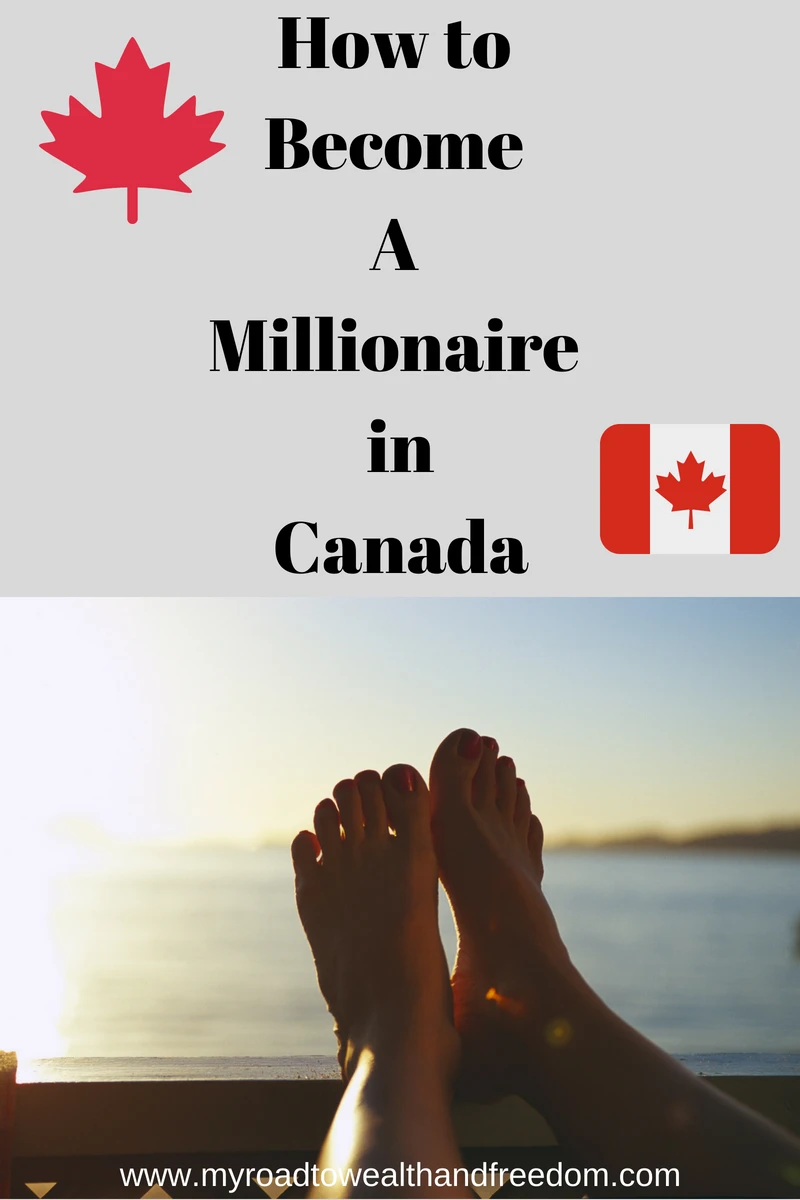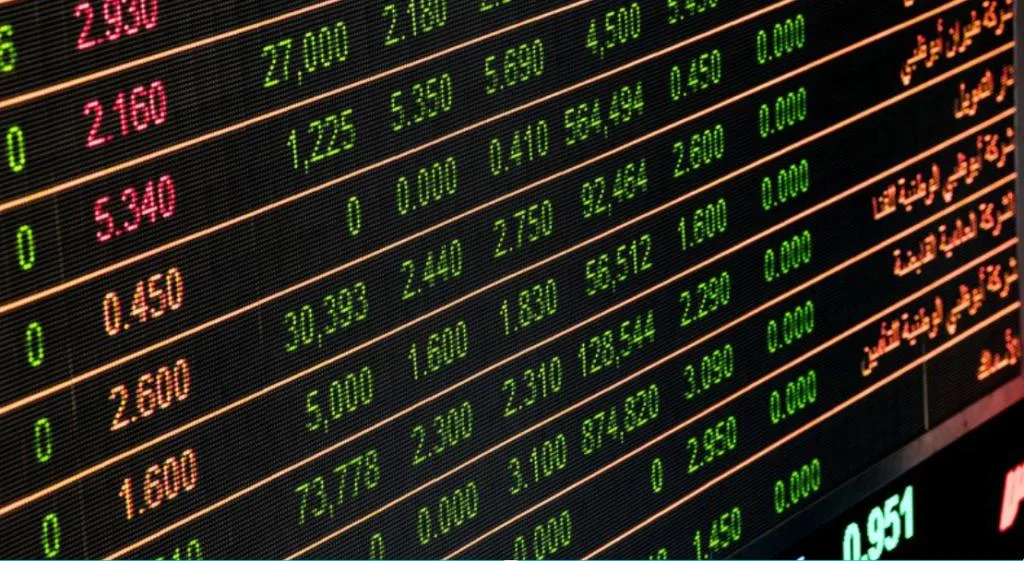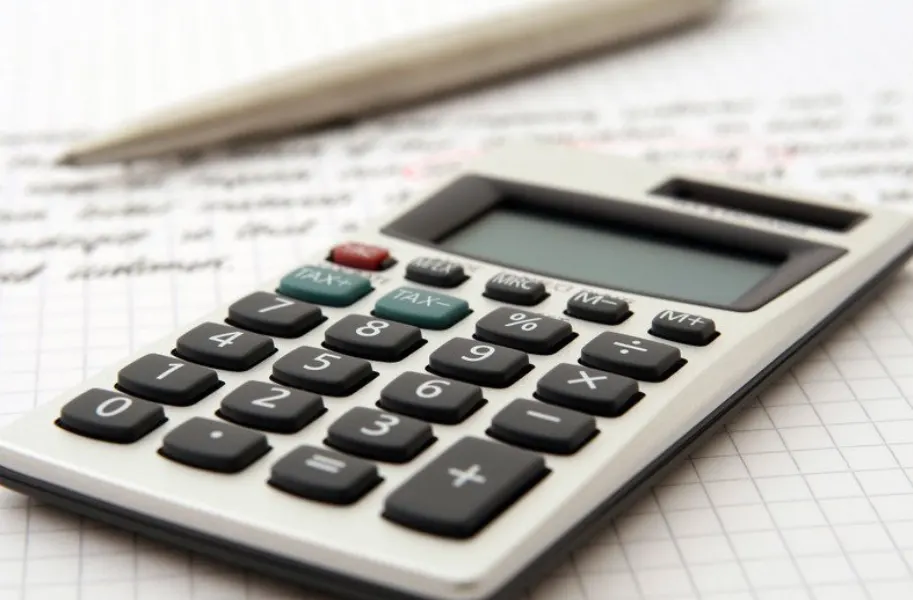
This post will guide you on How to Become a Millionaire in Canada. Canadians are among the most indebted people in the world so it might feel like becoming a millionaire in Canada is an impossible dream. While it may seem like a stretch, Canadians have a lot going for them on the road to becoming a millionaire.
Please note this post contains affiliate links. As a Questrade affiliate the blog earns a small commission from every signup.
It’s All About Time and Money

When we’re young, the one big advantage that we have is Time. Time is the one precious resource that we can’t make any more of.
In the financial world, Time is really important because the younger we are when we start saving, the less we’ll need to save over time, and the sooner we’ll become a Canadian Millionaire.
The reason why time is so important has to do with the power of compounding. Basically the first dollar saved and invested earns us the most amount of money over time.
The money we save earns interest (or some other form of investment return) which then gets re-invested to earn even more money and so on. Compounding is the reason that we’re able to double, triple or quadruple our nest egg over time. So it’s critical to start saving as early and as often as possible.
Stop Spending and Start Saving

As soon as we start making money, we need to save a little bit to work toward the goal of becoming a Canadian Millionaire. The reality is that we don’t have to save up a lot of money – even just $50 or $100 a month will go a long way toward reaching the end goal. The important thing at this stage is to develop the habit of saving something for the future.
You can start small by building an emergency fund. All you have to do is open a high interest savings account with an online bank that’s offering one of the highest interest rates around, like EQ Bank. Once you build up a sufficient balance, consider using some of that money for a down payment on a home or to invest.
If you can’t save any money at all, then I’d suggest cutting expenses and learning to budget. Doing these things should result in some form of savings. If that still doesn’t do it, then try to make more money by acquiring education or new skills to get a better paying job; or try working a second job or side hustle. Remember that slackers don’t usually become millionaires.
Own Real Estate

Real estate has minted more millionaires than any other type of investment. That’s why becoming a millionaire usually means owning at least some real estate.
Now I’m not saying that we need to go out and buy the most house for our money and be house poor. I am saying that it’s important to own real estate – whether it’s a modest, affordable home that doesn’t break the budget, or some cash-flowing rental property.
Owning tangible real estate assets is important because it is a leveraged investment. All that means is that the asset increases in value while the outstanding debt against it decreases over time. In lay terms, real estate usually goes up over time while the mortgage eventually is paid off.
Another important reason to own real estate is that, unlike financial assets like stocks or bonds, banks are more willing to let us borrow money against it.
We can take out a Home Equity Line of Credit (HELOC) or Second Mortgage against our real estate to invest which can dramatically increase our investment returns when done right. Borrowing money to invest can be risky so it’s important to know what you’re doing and understand the type of risk you are taking.
Start Investing

If you want to become a millionaire in Canada, then simply saving money and owning a house will not be enough to get you to your goal. You need to start investing your savings.
That means opening an account with an online low-cost/discount broker like Questrade to buy long term investments like individual stocks or index funds. These types of investments generate passive income in the form of dividends.
Study after study has shown that millionaires are constantly learning and educating themselves, so it’s important to take some time to educate yourself on some of the basics of personal finance and investing.
I provide a snapshot of some of the investing accounts and different types of investment income below, but I encourage you to check out my other articles and read widely on this stuff so you can make more informed choices.
In Canada, we have 3 basic options to invest our money:
RRSP – Registered Retirement Savings Plan
This is a retirement fund and is by far one of the most popular investment accounts around. We make annual contributions and we get a tax break on the money we put in.
The big advantage is the up-front tax break and that our money can compound tax-free over time.
What should you do with that tax refund? To get ahead I’d suggest using it to:
1. make a lump sum payment on your mortgage.
2. Put it in your RRSP so you get a bigger tax refund next year; or
3. Put it in your TFSA.
While getting a big tax refund sounds great, there are some downsides to an RRSP. One downside is that your money is trapped in the RRSP account.
By this I mean that if we withdraw money from the RRSP before we retire, we will be taxed on that money at our marginal tax rate and lose that contribution space forever.
The second downside is that we will be taxed in retirement on the money that we withdraw from the RRSP. The idea is that, in retirement, we won’t make as much money as we do during our working lives, so we would be taxed at a much lower rate.
For more information about RRSPs see the Canada Revenue Agency’s website.
TFSA – Tax Free Savings Account
The TFSA is nearly 10 years old and has quickly become one of Canada’s favorite investment accounts. There’s no question that the TFSA has huge potential for growing our wealth, but unfortunately most Canadians use it as a glorified savings account!
Most Canadians are taught to use the TFSA to save cash, earn a little interest and then go out and buy something like a car, a vacation or something else. Some people use it to save up a down payment for a home; which is better than the other stuff.
I believe that Canadians can unlock the real potential of the TFSA by using it as a long-term wealth building vehicle. Canadians are allowed to buy the same kinds of investments in their TFSA as we use in the RRSP.
That means we can buy mutual funds, exchange-traded funds (ETFs) or stocks. So it’s possible to build a tax-free investment portfolio that can provide some financial stability forever. For more information, check out my post on the TFSA.
Taxable Investment Accounts
The final investment option that Canadians have should only be used if the RRSP and TFSA are maxed out every year. After maxing out those accounts, any surplus money could be used to either pay down mortgage debt or invest in a taxable investment account.
A taxable investment account is an account where you’ll be taxed on any interest, dividends or capital gains. Because we get taxed on our investment earnings, it’s important to learn how different types of investment get taxed. It’s really not that difficult to understand so read on.
Types of Investment Income

Interest
The type of investment income that people are most familiar with is interest. We either pay it every month to our creditors for loans or we receive it in our bank accounts.
As an investment income, interest is taxed at 100%, meaning that every dollar in interest we earn is added to our total annual income and taxed at our marginal rate (the highest tax bracket that we find ourselves in).
Because interest income is fully taxable, it makes sense for some people to keep their bond funds in the TFSA or RRSP.
Dividends
Another type of investment income that Canadians may be familiar with is dividend income. If you own stocks or a stock mutual fund, sometimes you may receive a cash payment called a dividend. A dividend is piece of a company’s profit that is paid to its shareholders usually on a quarterly basis.
Dividends are taxed at a much lower rate than interest. Dividends are usually taxed at around 30% depending on which province you live in. This is a way better tax rate than the 100% rate at which interest income is taxed.
Capital Gains
Capital gains is probably the best type of investment income because of the way it is taxed. For every dollar of capital gains, you get to keep 50 cents free and clear.
The other 50 cents is added to your annual taxable income where it’s taxed at your marginal rate. For the average Canadian that means that they can keep about 70 cents per dollar earned in capital gains.
Build Up Sources of Passive Income

The hardest part of becoming a millionaire in Canada is building up enough sources of passive income. Passive income is money that we get from our investments (ie. not money that we have to work for).
It’s money that we get from rental properties, a website, or our financial investments in dividend stocks or low cost mutual funds or ETFs. Realistically, it takes a good decade of aggressively saving and investing to build up a decent amount of passive income.
Again, that’s why it’s important to start this stuff as young as possible. For more information check out my post about passive income.
What is Best Type of Investment Account in Canada?
All 3 types of investment accounts have their benefits and drawbacks. I think it makes sense to split some money between all 3 accounts.
Retirement funds going into the RRSP is pretty much dead money because the penalties for early withdrawal are so horrendous.
The TFSA is great because not only can it be used for long term investing, but you can withdraw some or all of the money in it without penalty if you’re ever in a pinch.
Finally, for some people it makes sense to have an emergency fund sitting in a high interest savings account.
Having money split up into all 3 types of accounts gives us a lot of flexibility and options when it comes to managing our finances.
Some years I don’t always have enough cash flow to max out my RRSP so I use money that’s in my taxable account or my TFSA. I get my tax refund and replace the money that I used for the RRSP.
I think most people prefer to have options when it comes to their financial affairs so it makes sense to use a combination of RRSPs, TFSAs, taxable investment accounts and an emergency fund.
How to Become a Millionaire in Canada?
The formula is simple and straightforward but never easy:
Spend less than you earn and invest the difference
Pay off all debt (including mortgage)
Build other sources of income (ie. From investments)
Let time and compounding work their magic.
Good luck to all of you aspiring Canadian Millionaires and thanks for reading!
Jordan @ MoneyMaaster.com
Monday 9th of July 2018
Well said, and very weird - i JUST wrote about this a couple days ago :)
https://moneymaaster.wordpress.com/2018/07/05/compound-interest-can-turn-anyone-with-patience-and-a-small-amount-of-disposable-income-into-a-millionaire/
GenXinvestor
Monday 9th of July 2018
Awesome! These posts tend to inspire a lot of people in terms of what their future could be. Hopefully more people back that up with concrete actions to build up their nest egg.